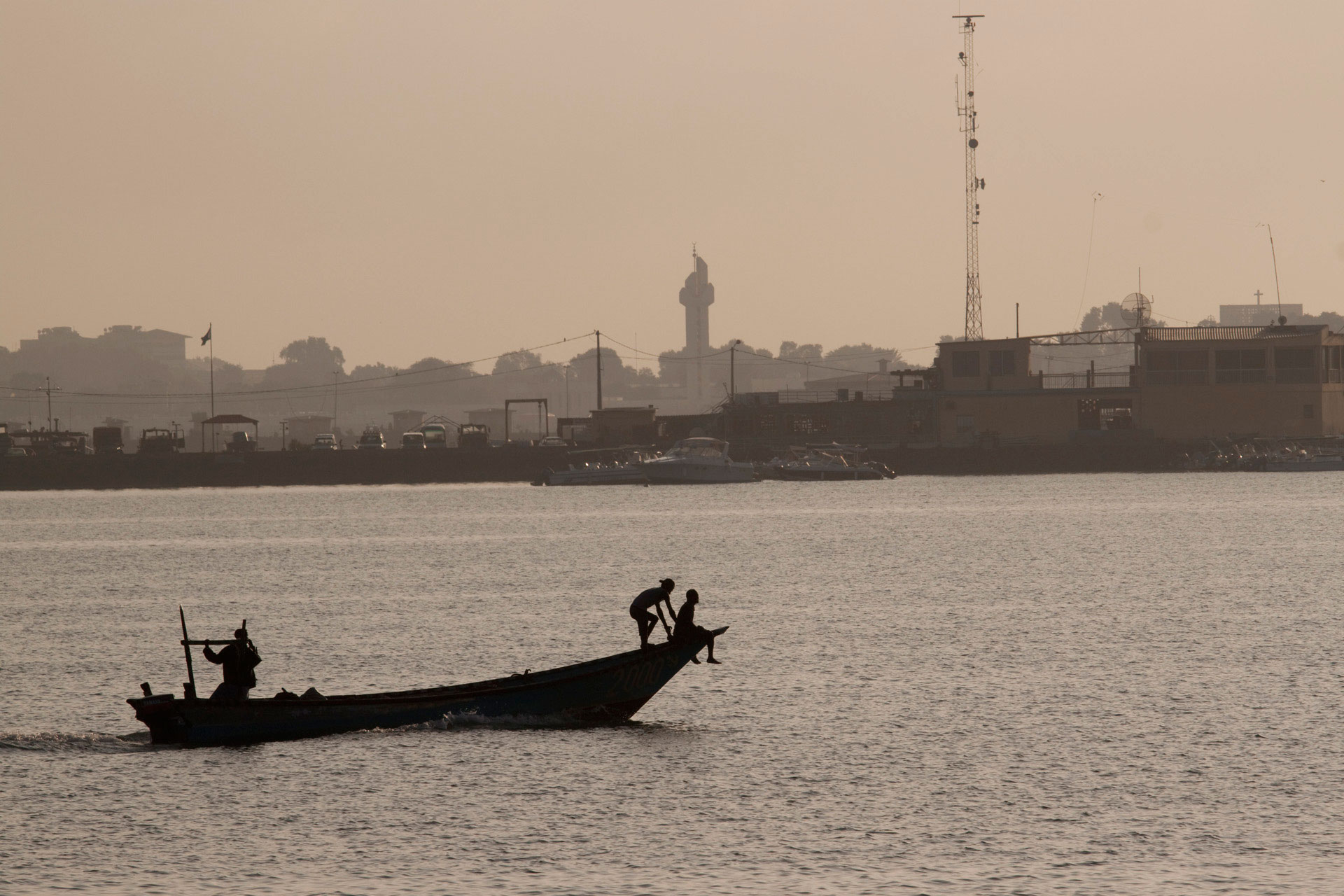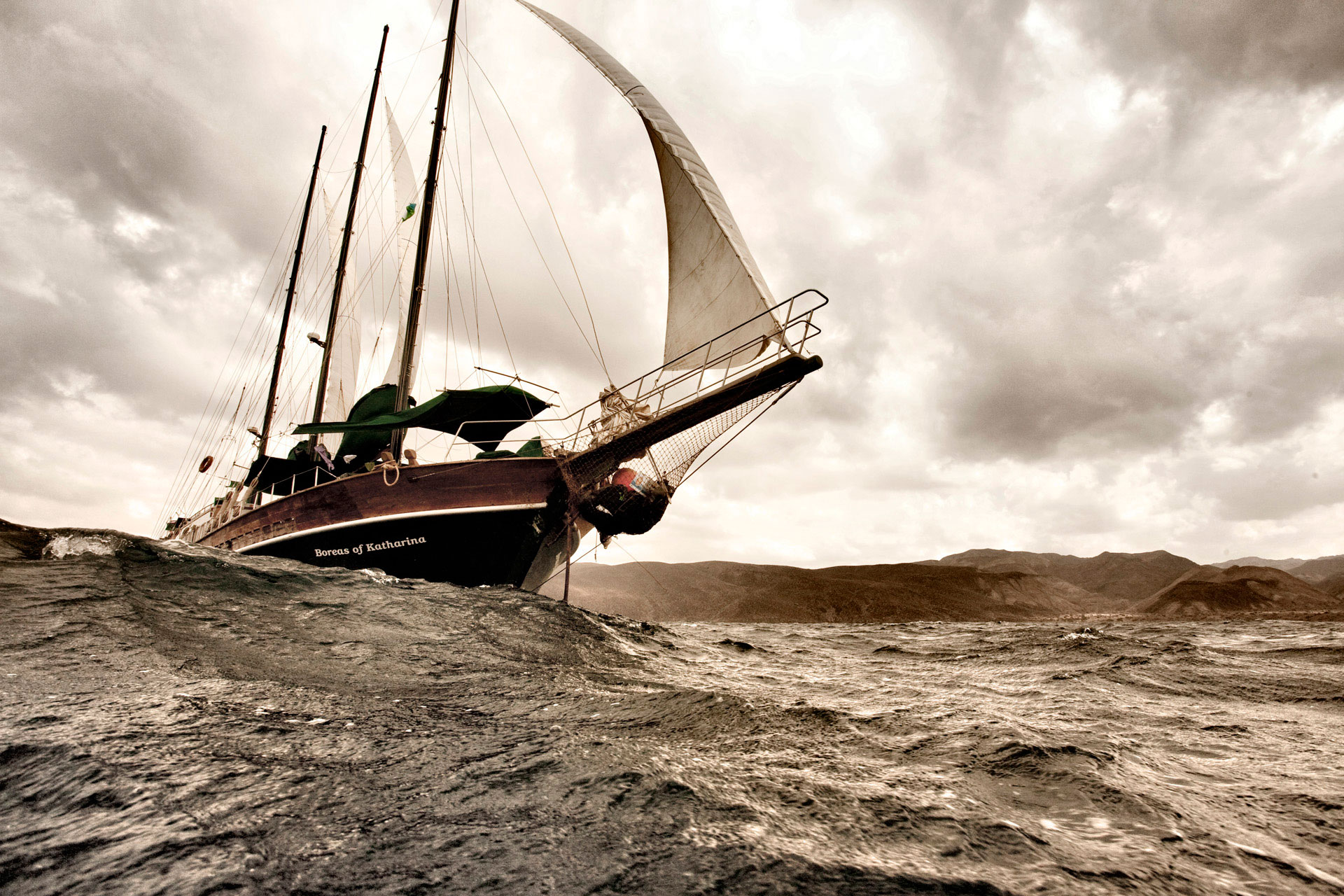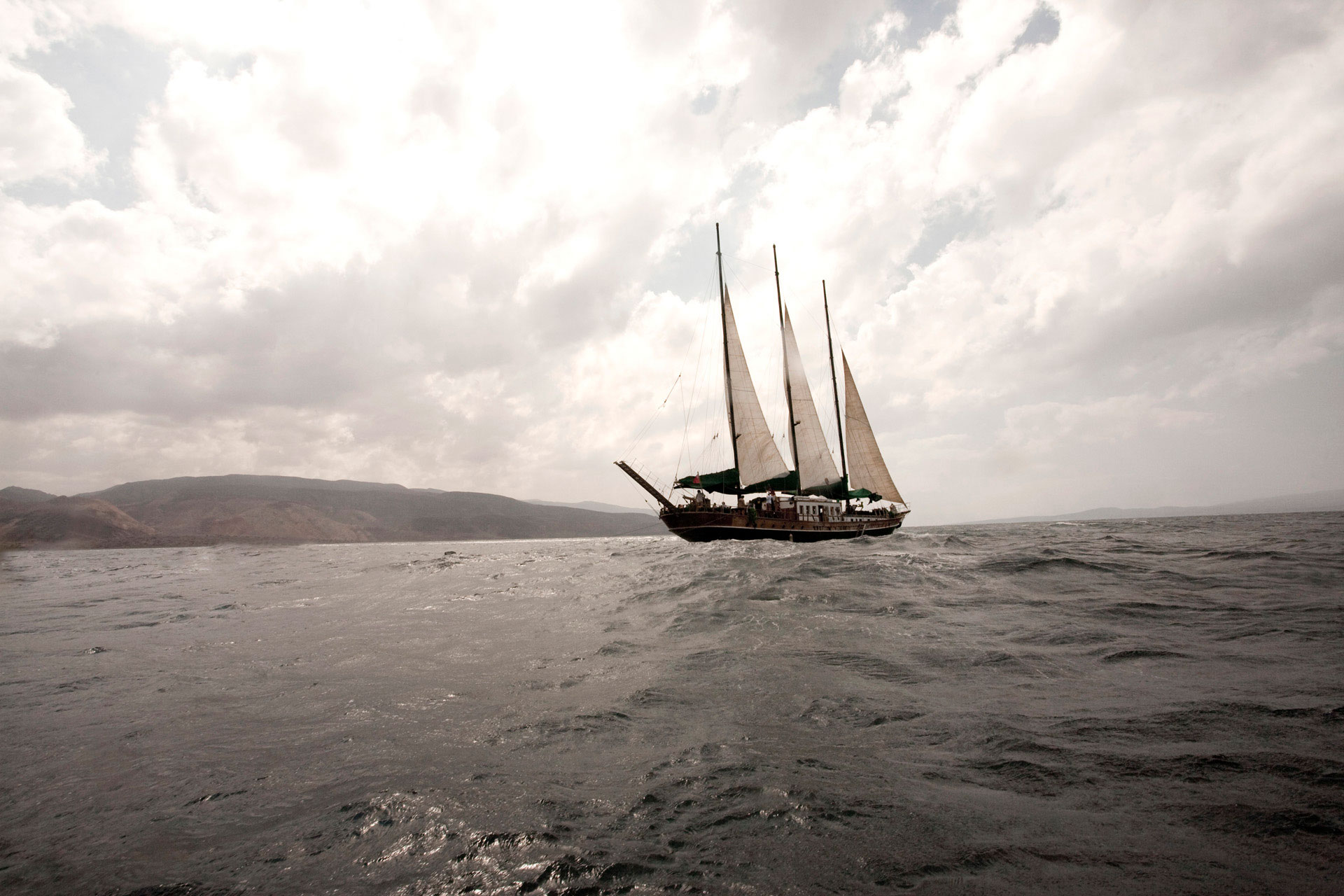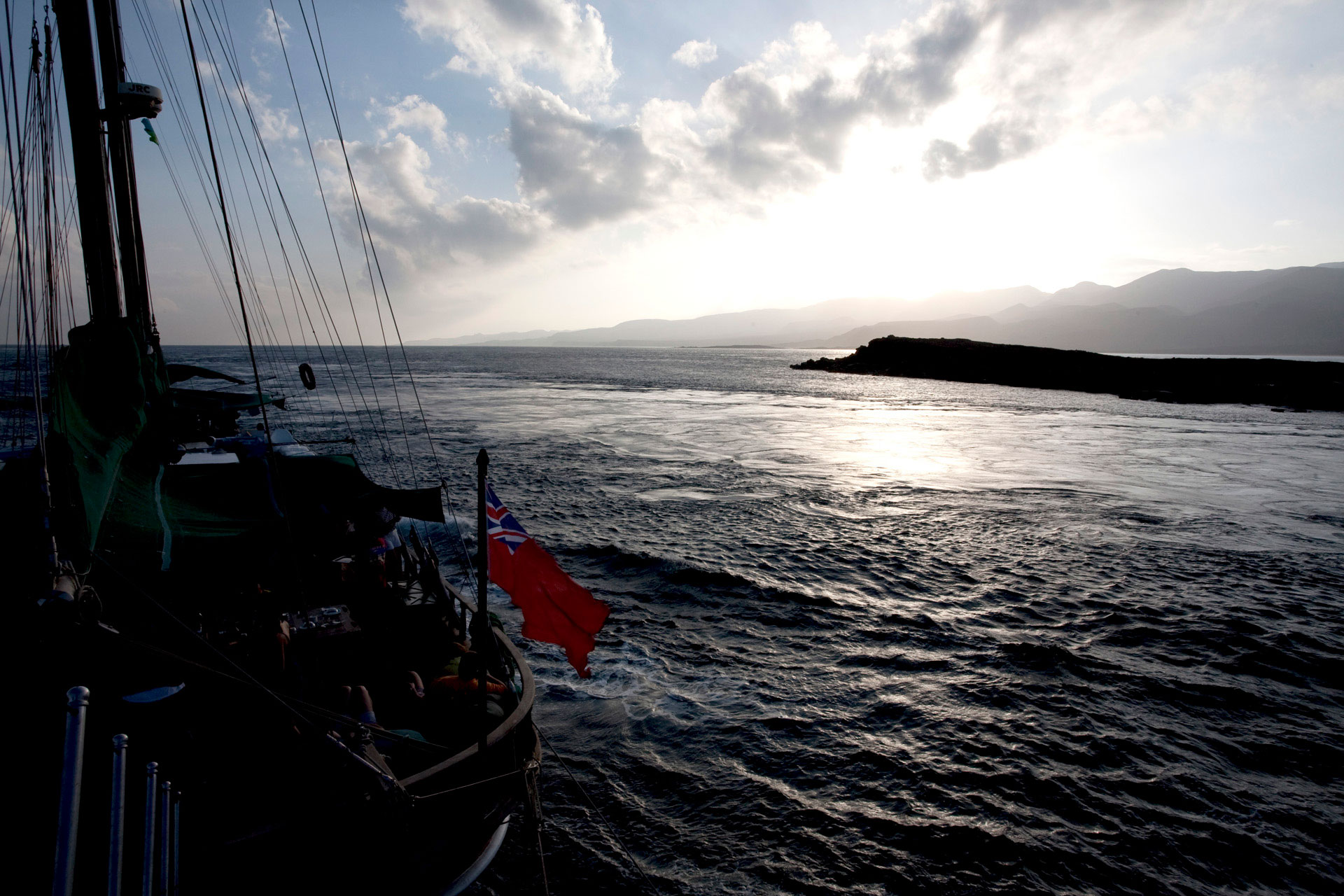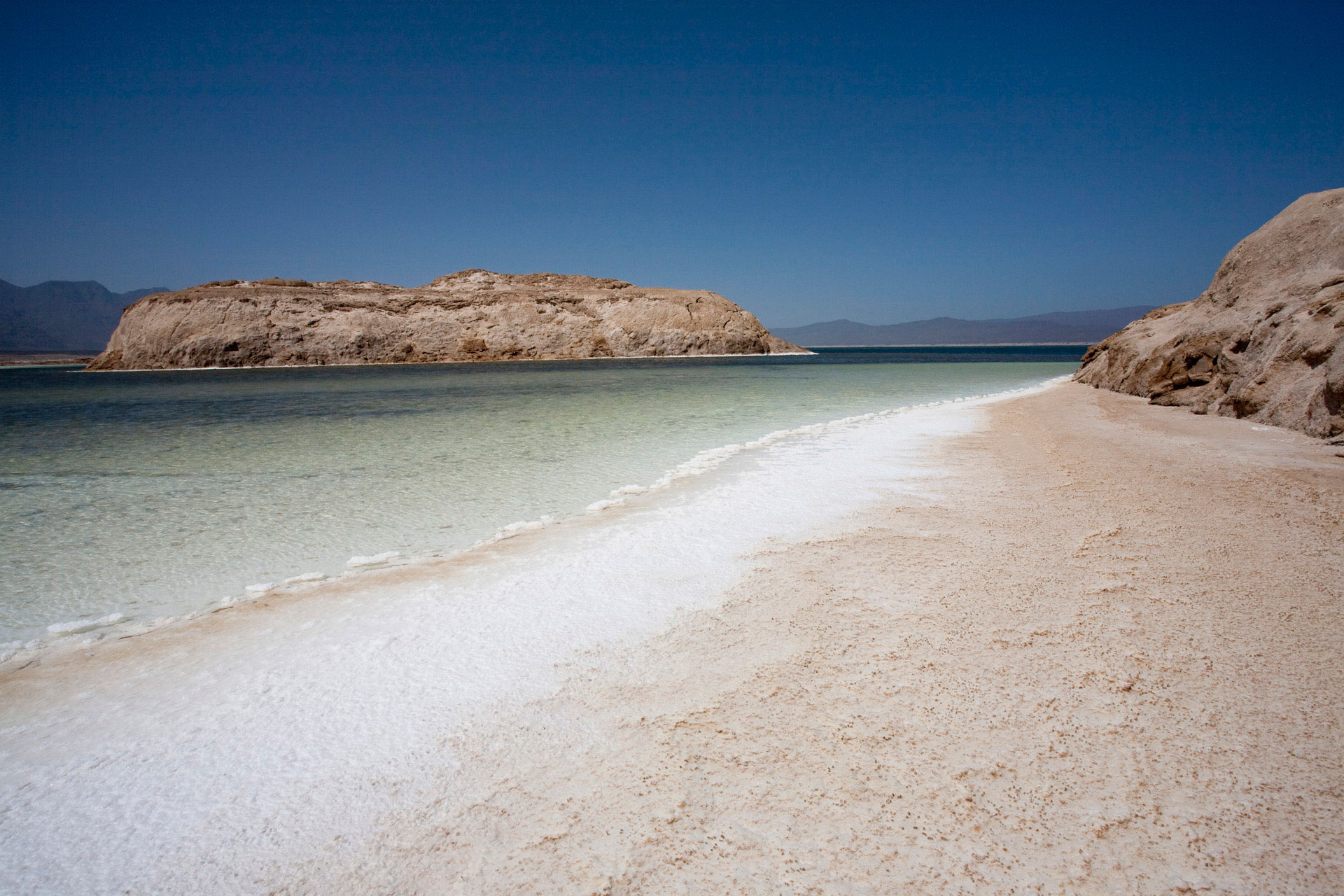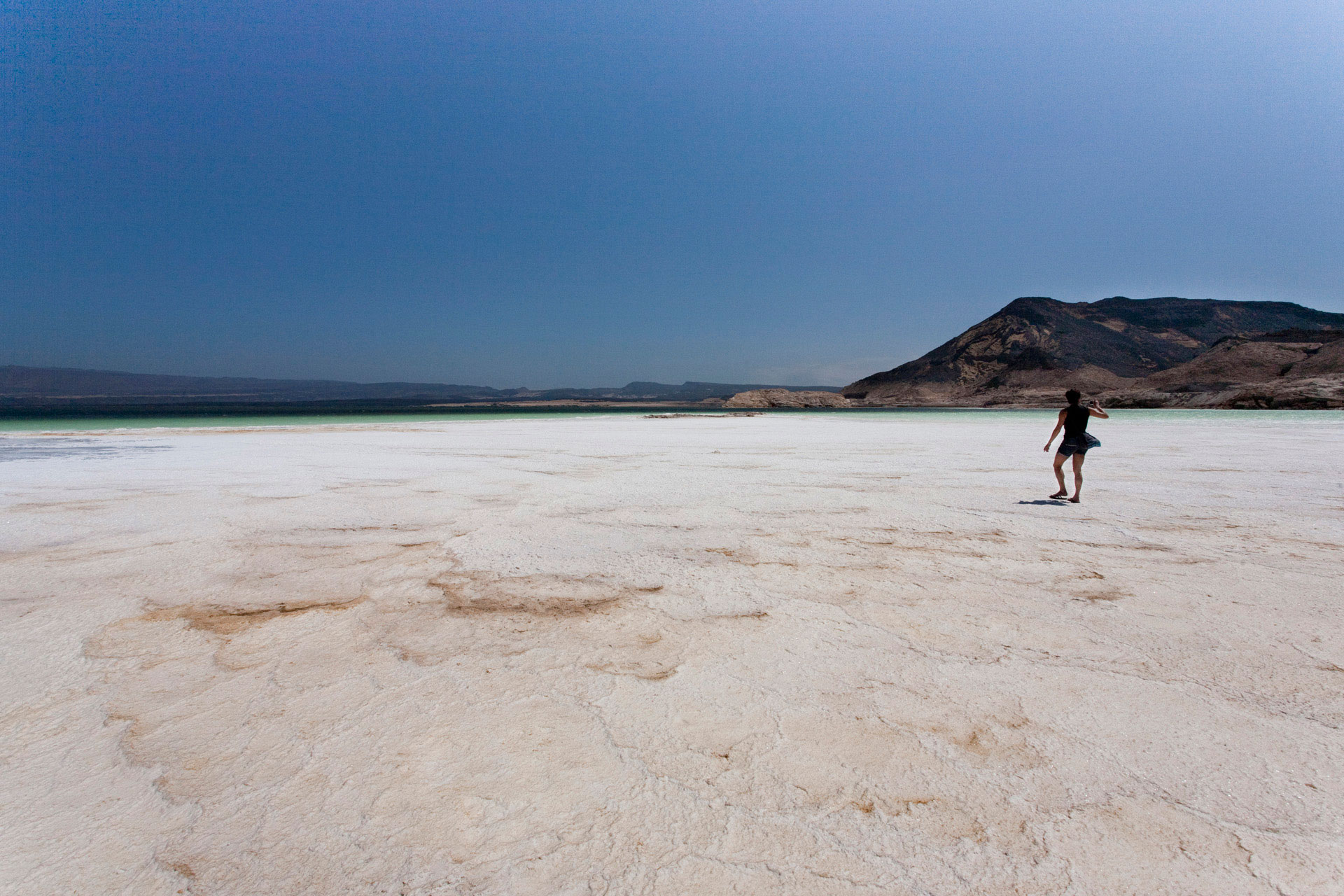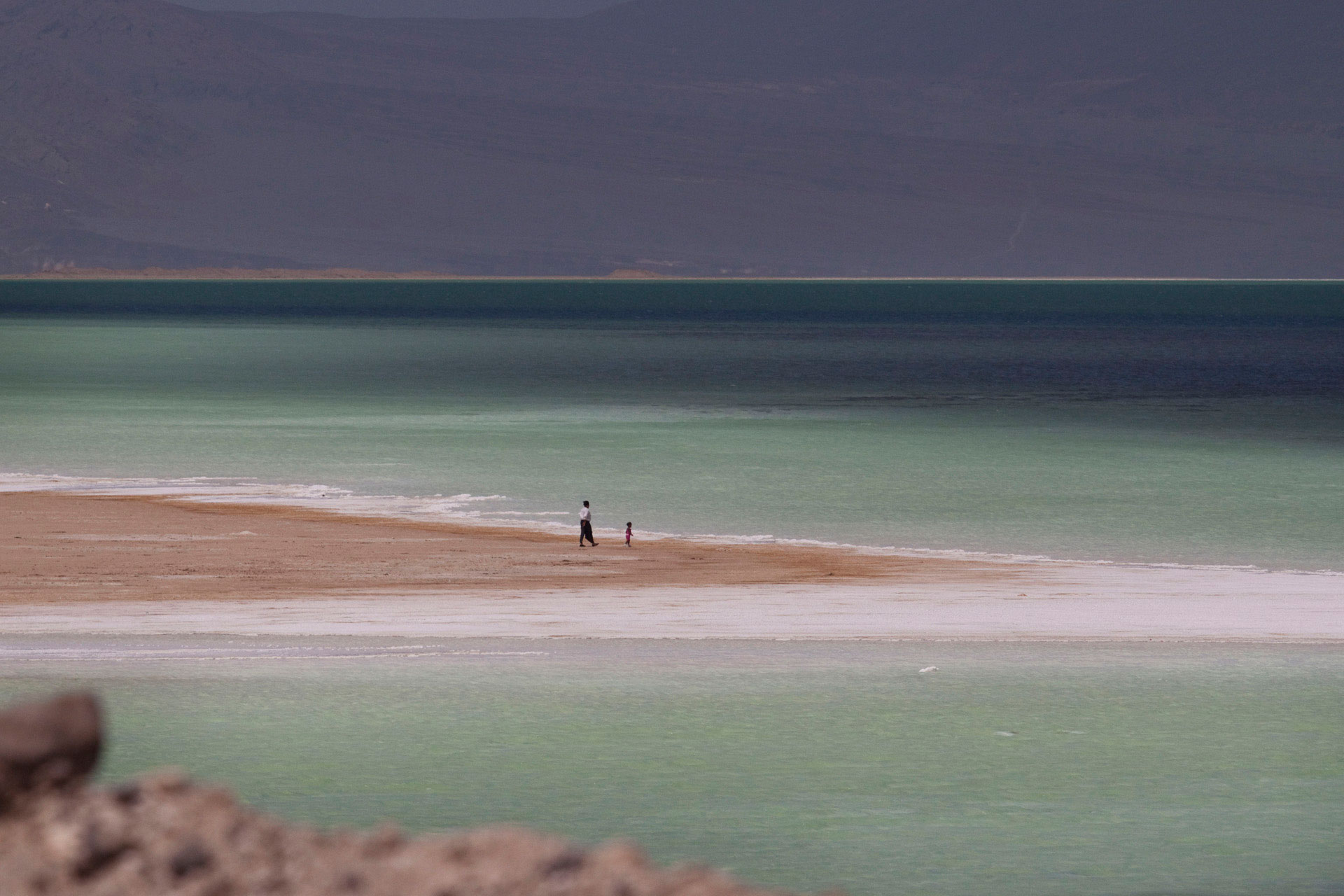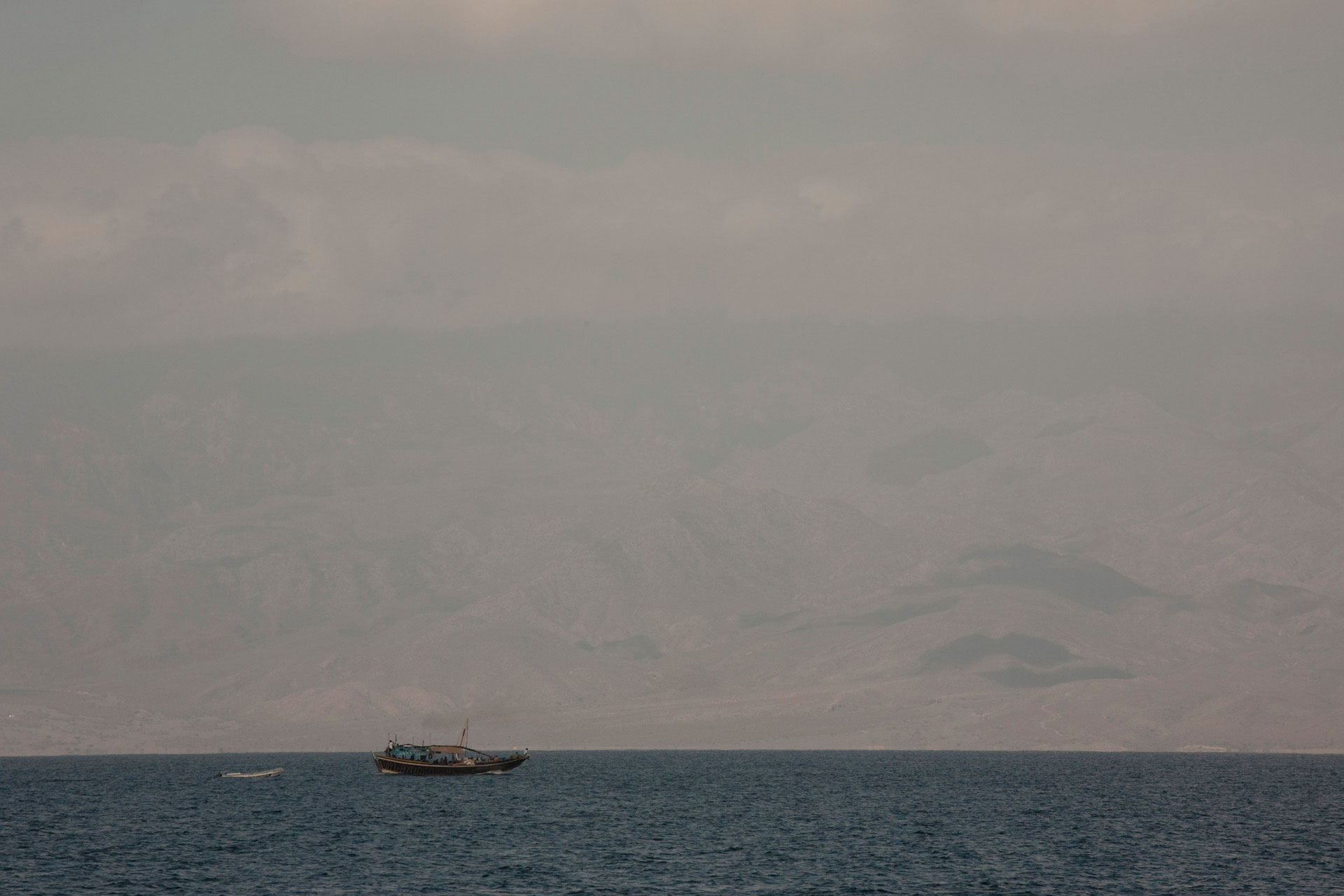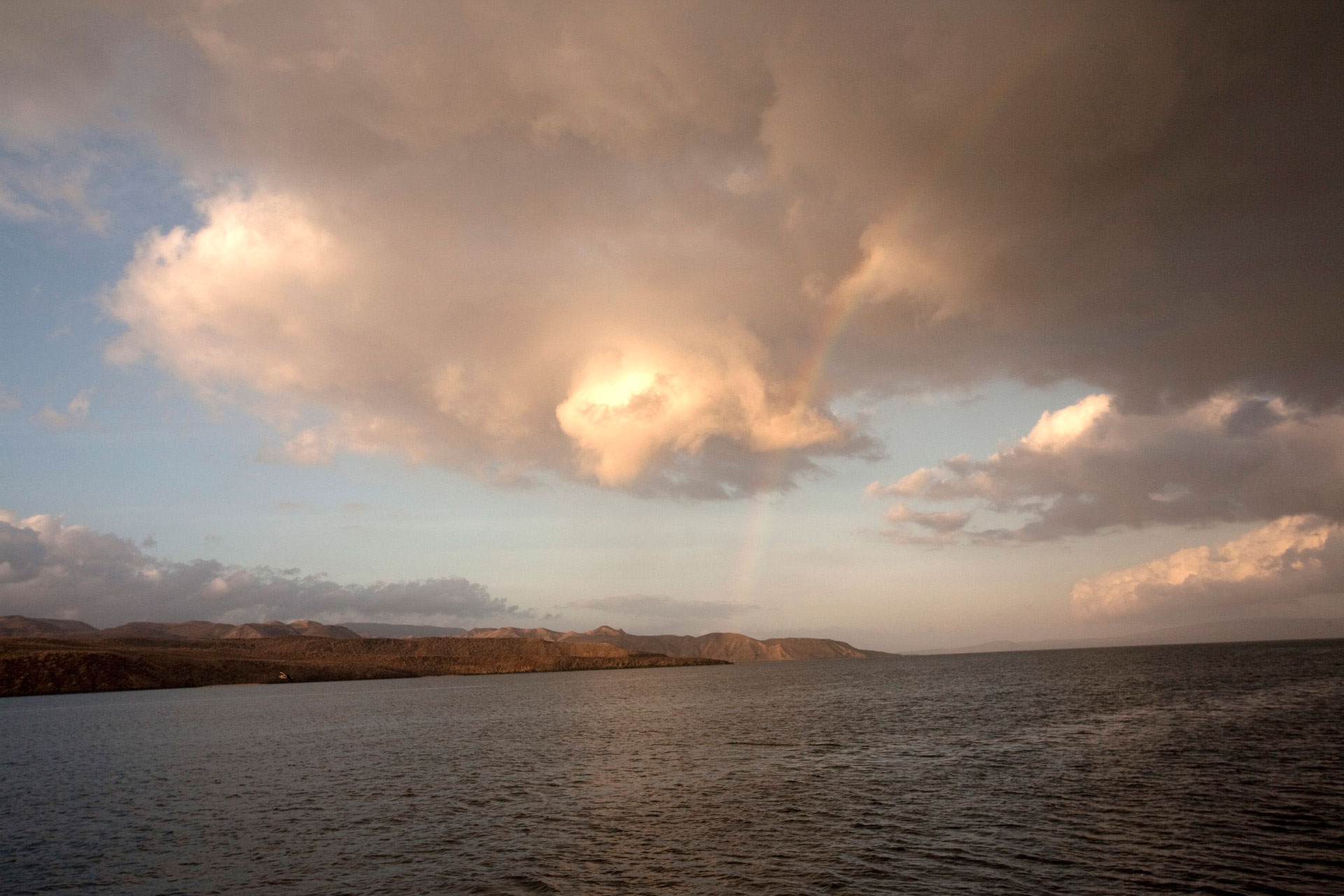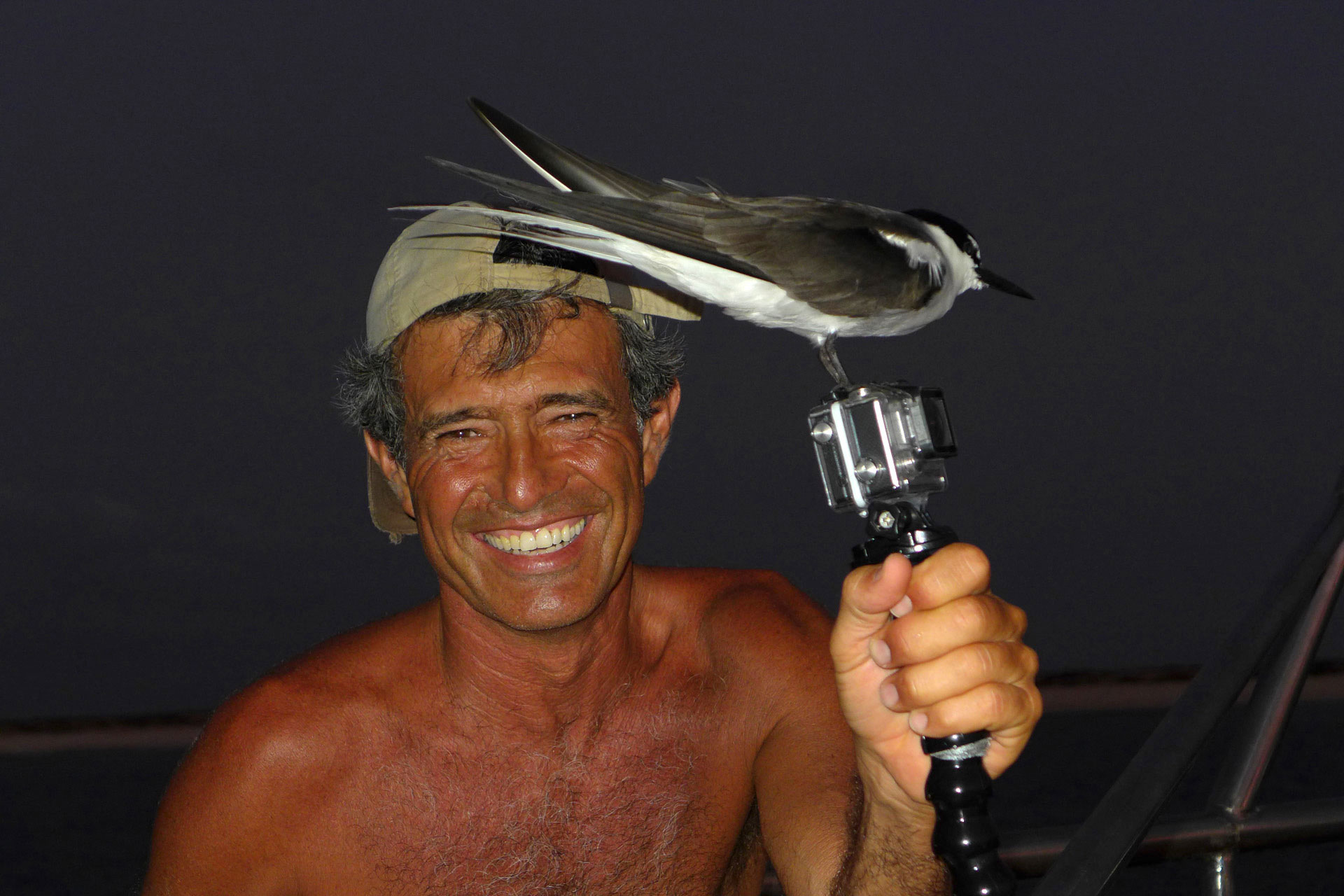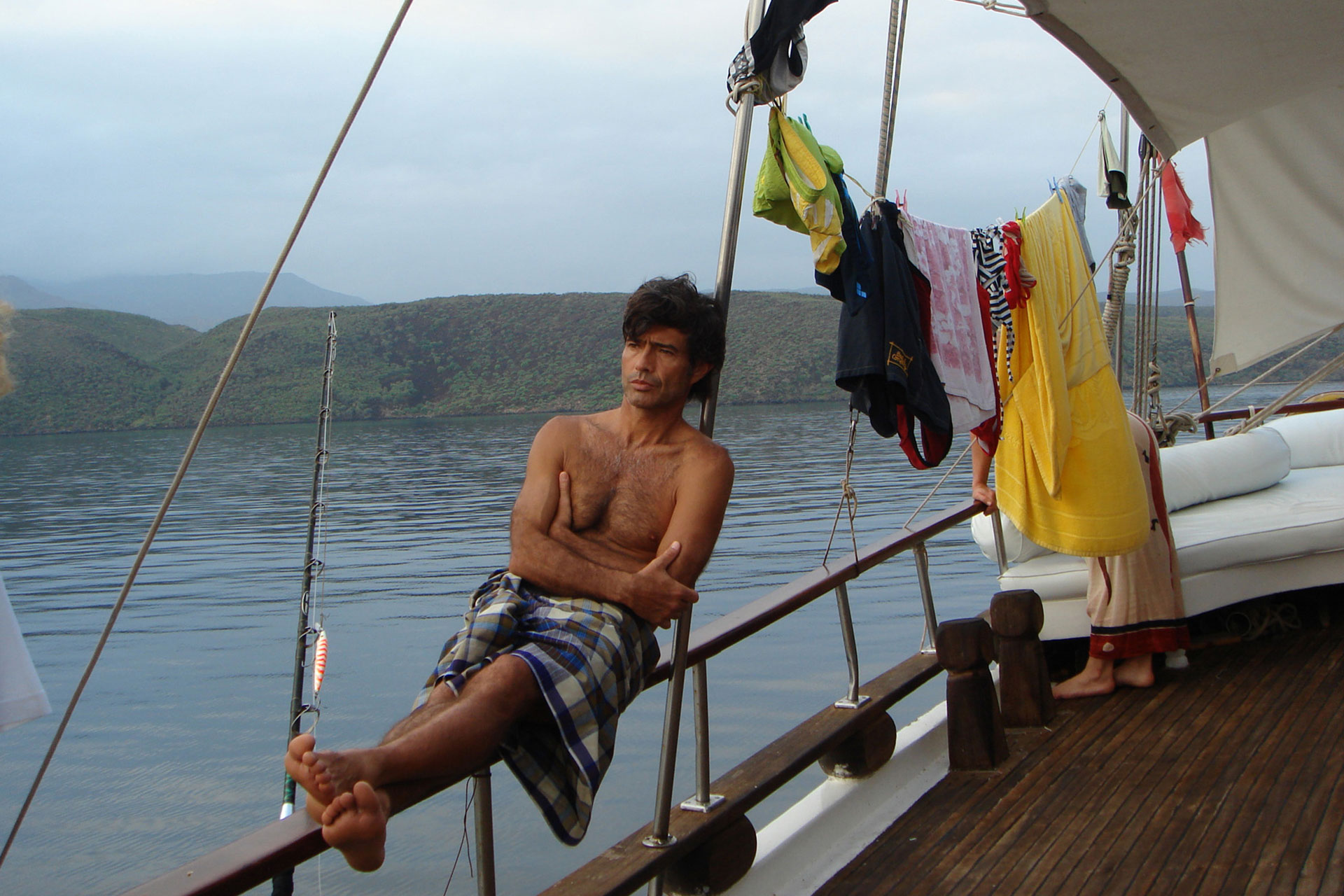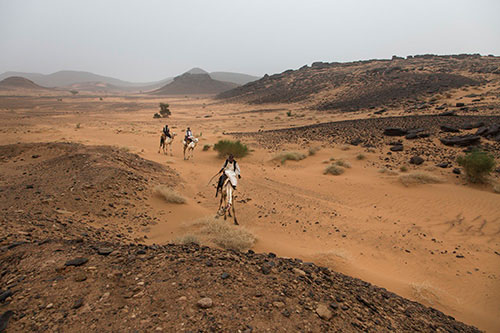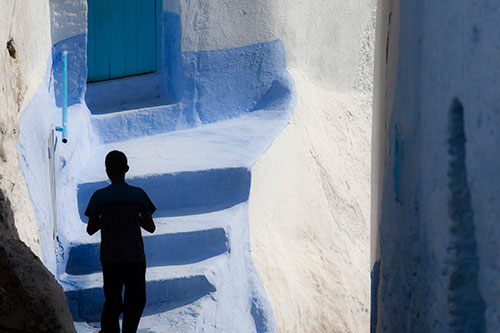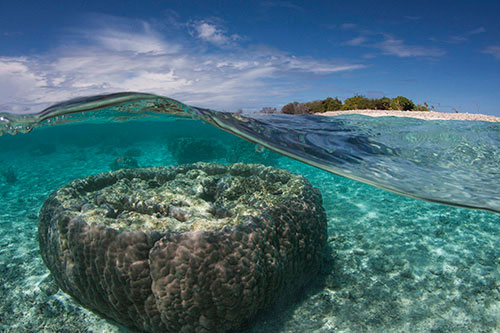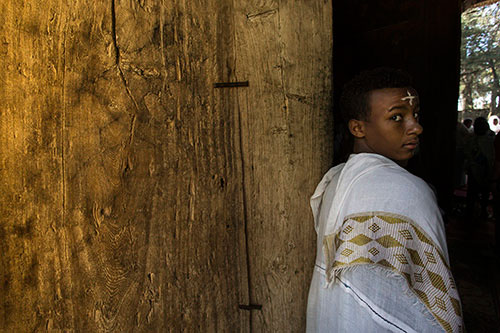BAIA DELLE STELLE
Atterro in questo microscopico lembo di terra senza avere la minima idea di cosa mi attenda.
Incontro Ohumed, un giovane pescatore di origine Afar, facciamo pochi passi e mi indica una vecchia abitazione di inizio secolo, – questa è la casa dove visse Arthur Rimbaud – e già sento aleggiare nell’aria calda e afosa i versi del poeta. Raggiungiamo il porto e incontriamo i famosi sambuchi che per secoli hanno solcato queste acque, penso ad Henry de Monfreid che proprio qui aveva deciso di trascorrere buona parte della sua vita, a cavallo tra la follia e l’illecito.
Ci imbarchiamo a bordo di un vecchio sambuco malconcio, alle nostre spalle il profilo della città scompare mentre davanti a noi si apre il golfo di Tadjoura e poi quello di Goubbeth el Kharab.
Davanti ai miei occhi un paesaggio lunare composto da montagne nere pennellate da venature rosse che con la luce bassa del mattino sembrano staccarsi per adagiarsi su lingue di fine sabbia bianca.
Houmed è il ponte tra passato e presente, ed io lo seguo senza perdere una sola parola.
Si narra che molto tempo fa nel mezzo del golfo del Ghoubbet el Kharab sorgesse un’isola che un giorno scomparve inghiottita dalle acque e tutt’intorno ad essa non rimase che un cerchio di fuoco.
All’improvviso l’isola ricomparve e da allora prese il nome di Ile du Diable, l’isola del Diavolo. Un luogo che evoca la presenza di forze misteriose che da queste parti chiamano Jinn.
Da allora i Jinn si impadronirono dell’isola e nessun pescatore si avventurò per molto tempo in queste acque considerate pericolose e dannate.
Calano le luci della sera, il marinaio fissa l’ormeggio a Baie de l’Etoile, La baia delle Stelle.
Humed mastica khat e beve the.
Le sue ultime parole biascicate prima di prendere sonno: – il nome Goubbeth el Karab in lingua Afar significa “il golfo della morte” –
Sollevo la testa e incontro un tappeto di stelle.
Penso a questo piccolo mondo dove gli elementi acqua, terra e fuoco si fondono dando origine ad una natura selvaggia di una bellezza sorprendente e a un popolo che ancora oggi si tramanda la leggenda dell’isola del Diavolo.
Sono dove volevo essere.
L’Ile di Diable svetta davanti a me.
La Baie de l’Etoile si accende e io mi spengo.
STARS BAY
I land in this microscopic strip of earth without the slightest idea of what awaits me.
I meet Ohumed, a young fisherman of Afar origin. We take a few steps and he shows me an old house from the beginning of the century. This is the house where Arthur Rimbaud lived. I already hear the poet’s verses floating in the hot and sultry air.
We reach the port and meet the famous dhows that have traversed these waters for centuries. I think of Henry de Monfreid, who decided to spend a good part of his life right here, between madness and the illicit.
Embarked on a battered old dhow, the profile of the city disappears behind us, while the Gulf of Tadjoura and then that of Goubbeth el Kharab opens up before us.
Before my eyes is a lunar landscape made up of black mountains brushed by red veins that, with the low morning light, seem to detach themselves to settle on fine white tongues of sand.
Houmed is my bridge between past and present, and I follow him without missing a single word.
It is said that a long time ago, in the middle of the Gulf of Ghoubbet el Kharab, an island arose; then, one day it disappeared, swallowed up by the waters; all around it remained only a circle of fire. Suddenly the island reappeared and has since taken the name of Ile du Diable, the island of the Devil. This place evokes the presence of mysterious forces that in these parts are called Djinn. The Djinn took over the island and for a long time no fisherman has dared venture into these waters, considered dangerous and damned.
The evening lights fall and the sailor sets the mooring in Baie des Etoiles (Bay of the Star) or Etoile Bay.
Humed chews khat and drinks tea. His last words mumbled before going to sleep: “The name Goubbeth el Karab in Afar language means ‘the gulf of death’”-
I raise my head and see a carpet of stars.
I think of this little world where the elements of water, earth and fire merge, giving rise to a wild nature of surprising beauty and to a people that still today hands down the legend of the Island of the Devil.
I am where I wanted to be.
The Devil’s Islands rise ahead of me.
Etoile Bay lights up and I am extinguished.



